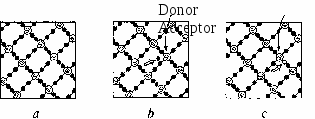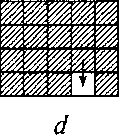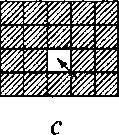Учебное пособие Издание второе, переработанное и дополненное Москва Астрель act 2005
 Скачать 0.99 Mb. Скачать 0.99 Mb.
|
|
a. Infinitive with/o b. Infinitive without to a. We expect the investigation to be completed soon. Мы ожидаем, что исследование будет скоро закончено. b. 1 heard them discuss this problem. Я слышал, что они обсуждали этот вопрос. Mind: 1. noun make + Inf. without to cause J pronoun Inf. with/o This force makes electrons move — заставлять 122 causes to move. Эта сила заставляет электроны двигаться. 2. allow i permit + + Infinitive - позволять, enable J Pronoun давать возможность This method enables more Этот метод дает возможность сделать accurate calculations более точные вычисления, to be made. • Sentences to be translated.
For-phrase for + + Infinitive pronoun For the data to be received you Для того чтобы получить эту ин- are to carry out numerous формацию, вы должны провести experiments. многочисленные опыты. • Sentences to be completed.
WORD AND PHRASE STUDY A + -ty=N conductive + -ty = conductivity • Think of the adjectives corresponding to the following nouns and translate them into Russian. mobility, possibility, regularity, activity, continuity, probability, density, majority, resistivity, impurity READING (16A) • Study the schematic representation of the passage given below, then read the passage and be prepared to summarize the problem using this scheme. conductors ► metals ► free electrons i Y semiconductors ► silicon (Si) nonconductive i / I(4-valencc) insulators ^conductive I doped with impurities n-type < arsenic (As) boron (B) ► p-type (5-valence) (3-valence) | (acceptor-type) (donor-type) ► crystal rectifiers < conduction conduction | p-n-junction device SEMICONDUCTORS Some materials cannot be classified as either insulators orgood conductors as thermal agitation ofthe atoms can knock loos*eonl/y a few electrons and permit tne material Dc slightly conductive. Such materials arc known as semiconductors. A small amount of the proper kind of impurity in the crystalline structure of a semiconductor may, however, make it enormously more conductive. A pure silicon crystal in which each atom of silicon has a chemical valence 4, is connected with four of its neighbors by four electron bonds. This situation arises when one atom of silicon is replaced by an atom of arsenic (As) which has a valence of 5. The impurities in the crystalline structure of a semiconductor make the semiconductor very conductive.  The four valence electrons ofthe As atom form connections (bonds) with the four neighboring Si atoms, while the fifth "black sheep" electron is left unemployed and free to travel from place to place. The impurity atoms that give rise to free electrons in this way arc known as donors. A reverse situation! occurs when the Si atom is replaced by a trivalent atom of boron (B). In this case there will be a vacant place, or an electron hole, that breaks up the spotless regularity ofthe silicon crystal rattice. The impurity atoms that give rise to such "holes" arc known as acceptors. A hole formed near a foreign atom present in the lattice may be filled up by an electron originally belonging to one of the neighboring silicon atoms, but in filling this hole the electron will leave a hole at the place where it was originally located. If this hole is filled by another neighboring electron, a new hole will move one step farther out.  
Thus, we can visualize the hole of that type as an "object" that is moving through the crystal, carrying a deficiency of negative charge, or, what is the same, a positive electric charge. Semiconductors that contain donor atoms and free electrons are known as n-type semiconductors, while those with acceptor atoms and holes are called p-type semiconductors (n and p stand for a negative and positive charge of electric carriers). The electrical conductivity of n-type semiconductors is determined by the number of free electrons per unit valence and the case with which they move through the crystal lattice, while in the case of p-type semiconductors it depends on the number and mobility of the holes. Crystal Rectifiers Suppose now that we put into contact two crystals: an n-type crystal containing free electrons and a p-typc crystal containing electron holes. Some of the electrons from the n-region will diffuse into the p-rcgion while some holes from this region will diffuse into the n-rcgion. Thus the n-type crystal will become slightly positively charged while the p-type crystal will carry an equal negative charge. Between these opposite charges on both sides of the interface (known as an "n-p-junction") there will be an electric force of attraction which will prevent further diffusion, and the situation will be stabilized with a certain number of holes in the n-type crystal and an equal number of electrons in the p-type crystal. It must be remembered, however, that when free electrons and electron holes exist side by side in a given material, they can be mutually "annihilated" by a free electron filling a hole. In order to compensate for the losses due to this annihilation process, a small number of electrons and holes will continue to diffuse in opposite directions through the n-p-junction. Let us sec what happens now if we apply an electric voitage at the two ends of our crystal pair. If the positive pole of a bauery is connected with the p-type crystal and the negative pole with the n-type crystal, there will be a force driving the holes to the right and the electrons to the left, and an electric current will begin to flow through the system. Since both crystals arc now being invaded by holes and electrons crossing the border, the rate of mutual annihilation on both sides of the n-p-junction will increase considerably, and more holes and electrons will have to be produced on both sides. These new electrons for the n-type crystal will be supplied by electrons pouring through the wire from the negative pole of the battery, while new holes will be produced by electrons leaving the p-typc crystal on their way to the positive pole ofthe battery. If, on the other hand, we reverse the direction ofthe electric potential the situation will be quite different. Now thcjelectrons and the holes will be pulled in opposite directions, leavinga"no-man's land" at the n-p-junction. It is clear that under these conditions no current can flow through our double crystal. Thus wc see that our device will conduct electric current in one direction but not in the opposite one. This property of one-way electric conductivity of n-p-junctions permits us to use pairs of n-type and p-t^pe crystals for rectifying alternating current instead of the more complicated electronic tubes. • Find English equivalents for the following Russian phrases. тепловое движение атомов; может освободить несколько электронов; небольшое количество определенной примеси; для простоты; остается незанятым; обратное происходит; нарушает безупречную правильность; определяется той легкостью, с. которой они перемешаются; привести в соприкосновение; граница раздела; п-рлертход; будет препятствовать дальнейшему рассеянию; приложить электрическое поле; оставляя никому не ггринадлежащую территорию; однонаправленная проводимость; кристаллическая решетка • Read the passage carefully and supply answers for the following questions.
CLASSWORK READING (I6B) • Read the passage in two minutes. Choose sentences supporting the ideas.
TRANSISTORS We can use a combination of n- and p-type crystals to carry out the functions of a triode tube. Such an arrangement is known as a transistor. It consists of a p-type crystal placed between two n-type crystals. If wc apply to the middle and to the right crystal an electric voltage from a battery no current will flow through the system. Things will change, however, if a small electric voltage from the battery is applied to the central and to the left crystal. In this case current will start to flow through the n-p-junction on the left. However, many electrons entering into the p-type crystal will continue across it and enter the n-type crystal on the right, thus permitting a current from the battery to flow through the right n-p-junction. The situation is quite similar to that existing in a triodc tube, and the crystal on the left plays the role ofthe filament, while the middle crystal and the crystal on the right play the role of grid and plate. The principal advantage of transistors over vacuum tubes lies in the fact that the controlled flow of electrons takes place entirely within solid material. Thus it is not necessary to use a large amount of power to keep a filament red-hot to eject electrons into space. This, in addition to thcirsimplicity, reliability and small size, is rapidly causing transistors to take the place of the old-fashioned vacuum tubes in many fields of electronics. • Give a free translation of the text. Один из способов классификации твердых тел — это классификация их по их электрическим свойствам. Во-первых, проводники и изоляторы различаются своей электропроводностью. В частности, проводники имеют проводимость от 104 до 10Аом 'см1, в то время как изоляторы характеризуются проводимостмми менее чем 10"6ом"'см"'. Во-вторых, проводимость проводника уменьшается при увеличении температуры, в то время как проводимость изолятора лишь слегка изменяется с увеличением температуры. Кроме проводников и изоляторов, существует класс твердых тел с промежуточными значениями электропроводимости (106до 103ом" 'см-1), проводимость которых увеличивается (сильнее, чем у изоляторов) с увеличением температуры. Такие твердые тела, которые похожи на изоляторы только при температурах около абсолютного нуля, называются полупроводниками. Одно заметное (marked) различие между проводником и полупроводником связано со степенью (degree) чистоты кристалла. Проводимость хорошего проводника увеличивается при очистке, например при устранении (elimination) примесей из кристалла, тогда как проводимость полупроводника при очистке обычно уменьшается. HOMEWORK (to be done in writing) 1. Translate into Russian.
2. Translate into English. Use the Complex Object and the for + Infinitive phrase.
UNIT SEVENTEEN GRAMMAR: THE INFINITIVE • Translate the following sentences into Russian. Pay special attention to the construction the Complex Subject with the Infinitive. Follow the model. Model: A yawning ozone hole is reported to have been identified over the Antarctic. Сообщают, что нал Антарктикой обнаружена зияющая озонная дыра.
• Agree with the speaker's idea. Use the Complex Subject with the Infinitive. Follow the model. Model: It is known that the ozone layer acts as a filter. Yes, the ozone layer is known to act this way.
130
WORD AND PHRASE STUDY • Pay attention to the prefixes. Guess the meaning of the following words: trans- = across — transmit, transform, transduce, translate, transfer, transplant mis- = wrong —misunderstand, miscalculate, mislead, mispronounce, misbehave, misinform со- = together with — cooperate, coordinate, coincidence, coaxial, coworker semi- = half — semiconductor, semicircle, semisphere, semifinal, semiofficial READING(17A) • Read the passage below and classify the symmetries described in it. SYMMETRIES Symmetries and apparent symmetries in the laws of nature have played a part in the construction of physical theories since the time of Galileo and Newton. The most familiar symmetries are spatial or geometric ones. In a snowflake, for example, the presence of a symmetrical pattern can be detected at a glance. The symmetry can be defined as an invariance in the pattern that is observed when some transformation is applied to it. In the case ofthe snowflake the transformation is a rotation by 60 degrees, or one-sixth of a circle. If the initial position is noted and the snowflake is then turned by 60 degrees (or by any integer multiple of 60 degrees), no change will be perceived. The snowflake is invariant with respect to 60-degree rotations. According to the same principle a square is invariant with respect to 90-degrce rotations and a circle is said to have continuous symmetry because rotation by any angle leaves it unchanged. Although the concept of symmetry had its origin in geometry, it is general enough to embrace invariance with respect to transformations ofother kinds. An example of a nongeometric symmetry is the charge symmetry of electromagnetism. Suppose a number of electrically charged particles have been set out in some definite configuration and all the forces acting between pairs of particles have been measured. If the polarity ofall the charges is then reversed, the forces remain unchanged. Another symmetry ofthe nongeometric kind concerns isotopic spin, a property of protons and ofthe many related particles called hadrons, which are the only particles responsive to the strong force. The basis of the symmetry lies in the observation that the proton and the neutron are remarkably similar particles. They differ in mass by only about a tenth of a per cent, and except for their electric charge they arc identical in all other properties. It therefore seems that all protons and neutrons could be interchanged and the strong interactions would hardly be altered. If the electromagnetic forces (which depend on electric charge) could somehow be turned off, the isotopic-spin symmetry would be exact; in reality it is only approximate. Although the proton and the neutron seem to be distinct particles and it is hard to imagine a state of matter intermediate between them, it turns out that symmetry with respect to isotopic spin is a continuous symmetry, like the symmetry of a sphere rather than like that of a snowflake. All the symmetries wc discussed so far can be characterized as global symmetries; in this context the word global means "happening everywhere at once". In the description of isotopic-spin symmetry this constraint was made explicit: the internal rotation that transforms protons into neutrons and neutrons into protons is to be carried out everywhere in the universe at the same time. In addition to global symmetries, which arc almost always present in a physical theory, it is possible to have a "local" symmetry, in which the convention can be decided independently at every point in space and every moment in time. Although "local" may suggest something of more modest scope than a global symmetry, in fact the requirement of local symmetry places a far more stringent constraint on the construction of a theory. A global symmetry states that some law of physics remains invariant when the same transformation is applied everywhere at once. For a local symmetry to be observed the law of physics must retain its validity even when a different transformation takes place at each point in space and time. • Re-read the passage and find English equivalents for the following Russian terms. симметрия — явная/пространственная/(не)геометрическая/в мировом масштабе/локальная/нспрерывная/сп ии-изотопная/зарядная • Look through the passage and find English equivalents for the following Russian phrases. с первого взгляда; удивительно схожие частицы; вряд ли бы изменились; по-видимому, разные частицы; повсюду; одновременно; можно принять условие; намного более сильное ограничение; сохранить свое значение • Answer the following questions.
|
